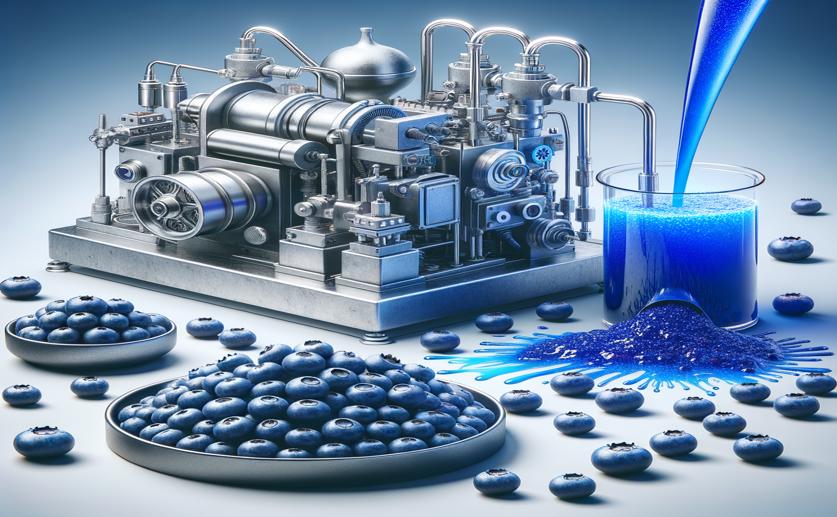
New Method to Extract Blueberry Pigments Using Compressed Fluid Technology
Greg Howard
22nd May, 2024

Image Source: Natural Science News, 2024
Key Findings
- Researchers at iBET developed a new method to isolate portisins, natural pigments, from blueberry surplus anthocyanins
- The new method uses a two-step process with carbon dioxide and ethanol, optimizing pressure, temperature, and ethanol content
- This method increases portisins content by 1.5 times and is more sustainable, reducing solvent use compared to traditional methods
References
Main Study
1) Compressed fluid-based technology for downstream isolation of bluish anthocyanin-derived pigments obtained from blueberry surplus.
Published 21st May, 2024
https://doi.org/10.1039/d3fo04813f
Related Studies
2) Health promoting properties of blueberries: a review.
3) Counter-Current Fractionation-Assisted Bioassay-Guided Separation of Active Compound from Blueberry and the Interaction between the Active Compound and α-Glucosidase.
4) Sustainable blueberry waste recycling towards biorefinery strategy and circular bioeconomy: A review.



 17th April, 2024 | Jenn Hoskins
17th April, 2024 | Jenn Hoskins